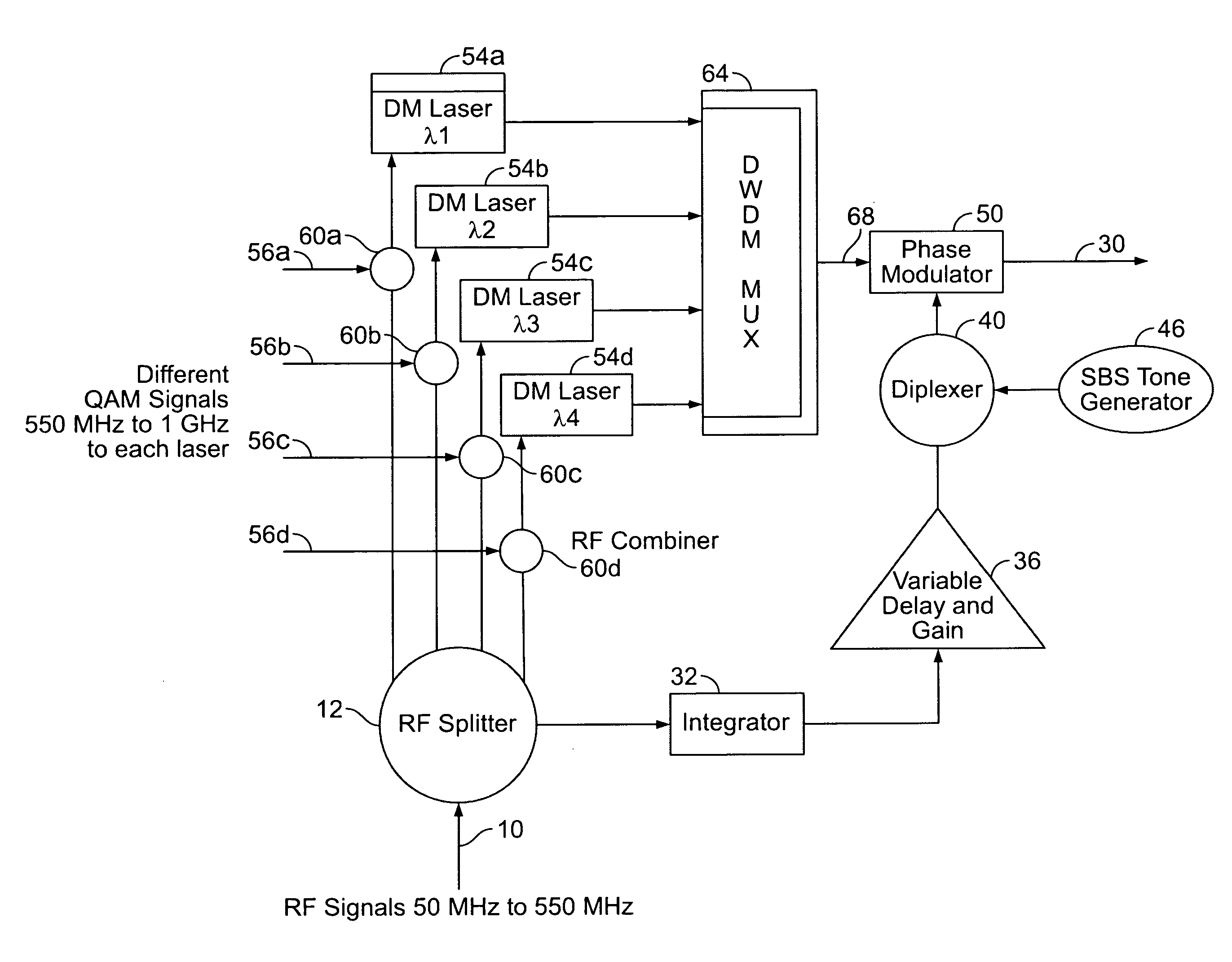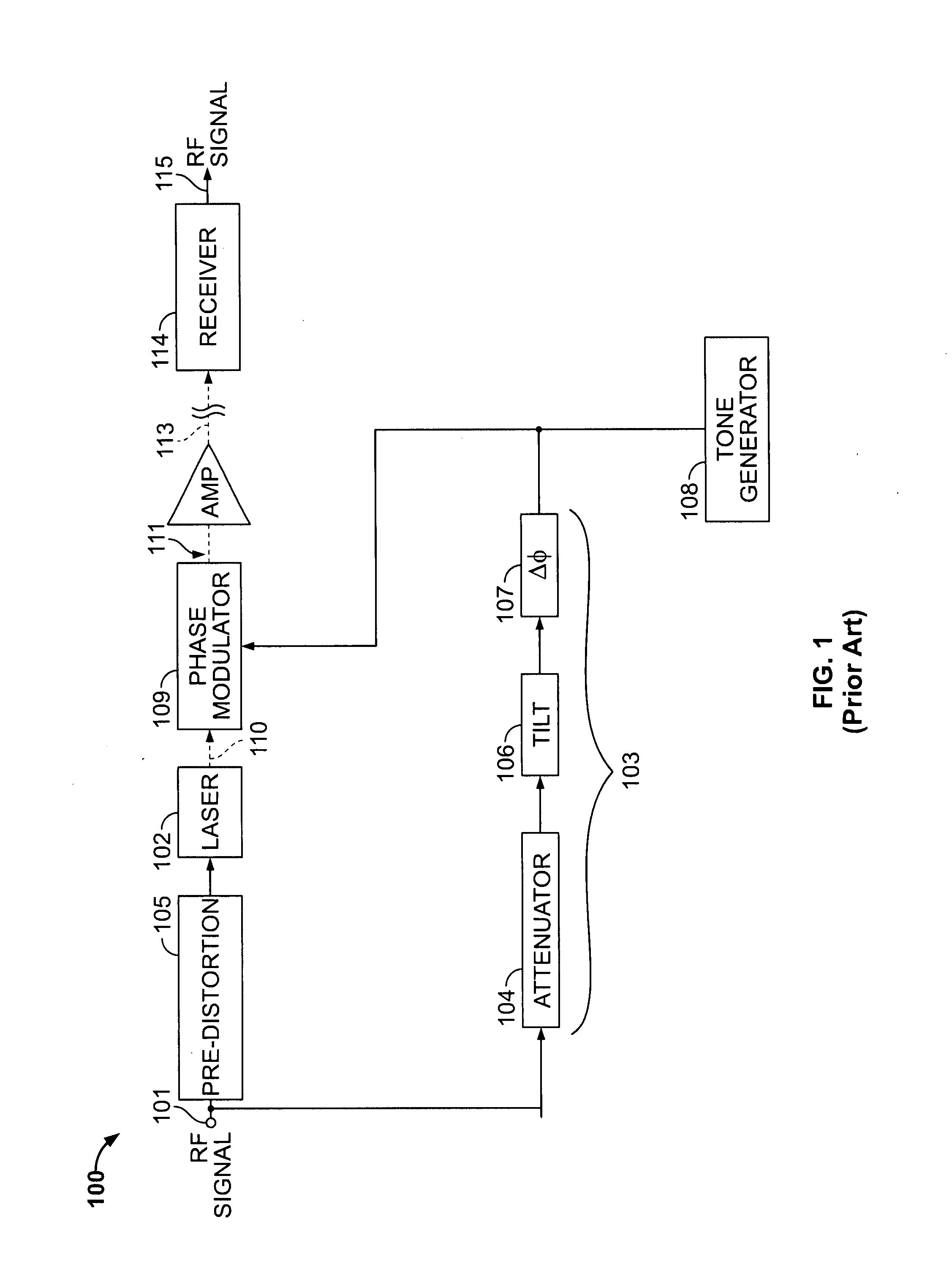Method and apparatus for low chirp transmitter for optical fiber communications
a low-chirp, optical fiber technology, applied in the direction of electromagnetic transmission, electromagnetic transceivers, multi-component communication, etc., can solve the problems of difficult suppression of stimulated brillouin scattering (sbs), high cost, and difficult modulation depth of external modulated transmitters, etc., to achieve low-chirp in the transmitter, suitable for optical fiber networks
- Summary
- Abstract
- Description
- Claims
- Application Information
AI Technical Summary
Benefits of technology
Problems solved by technology
Method used
Image
Examples
Embodiment Construction
[0016]FIG. 2 shows in a block diagram an optical transmitter in accordance with this disclosure. The various components are each of standard type, commercially available, and well known in the field. The remainder of the system, including the fiber optic span and the optical receiver, are also conventional as in FIG. 1. Hence FIG. 2 (unlike FIG. 1) only shows the transmitter. As shown, there is input terminal 10 to which is applied a composite RF (electrical) signal such as a cable television signal, which may include many channels of analog cable television transmissions or other types of signals, including for instance a QAM signal. The composite RF signal may be an analog video signal or a digital video signal such as QAM (Quadrature Amplitude Modulation). Thus the present apparatus is suitable for use with digital signals also. The input composite RF electrical signal is applied to a radio frequency splitter tap coupler 12 which is a standard device. The RF splitter / RF coupler 1...
PUM
 Login to View More
Login to View More Abstract
Description
Claims
Application Information
 Login to View More
Login to View More - R&D
- Intellectual Property
- Life Sciences
- Materials
- Tech Scout
- Unparalleled Data Quality
- Higher Quality Content
- 60% Fewer Hallucinations
Browse by: Latest US Patents, China's latest patents, Technical Efficacy Thesaurus, Application Domain, Technology Topic, Popular Technical Reports.
© 2025 PatSnap. All rights reserved.Legal|Privacy policy|Modern Slavery Act Transparency Statement|Sitemap|About US| Contact US: help@patsnap.com



